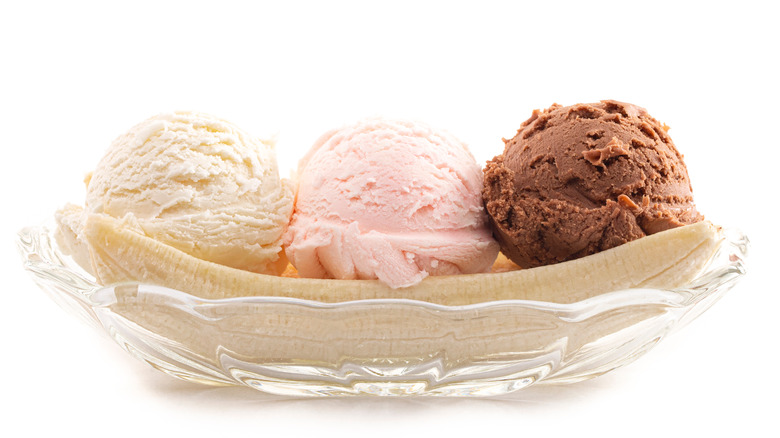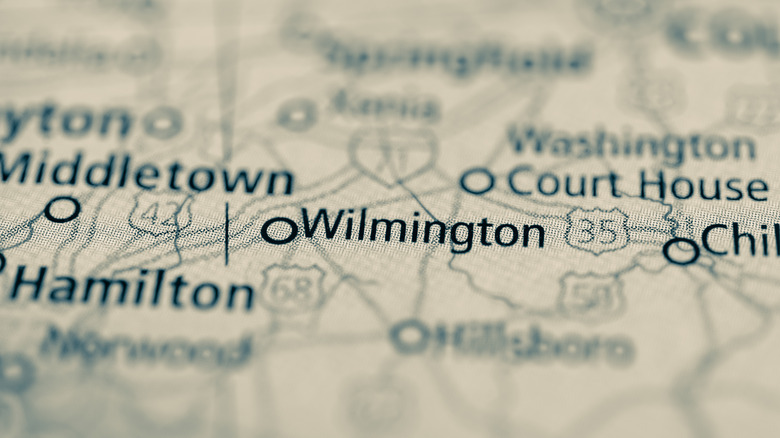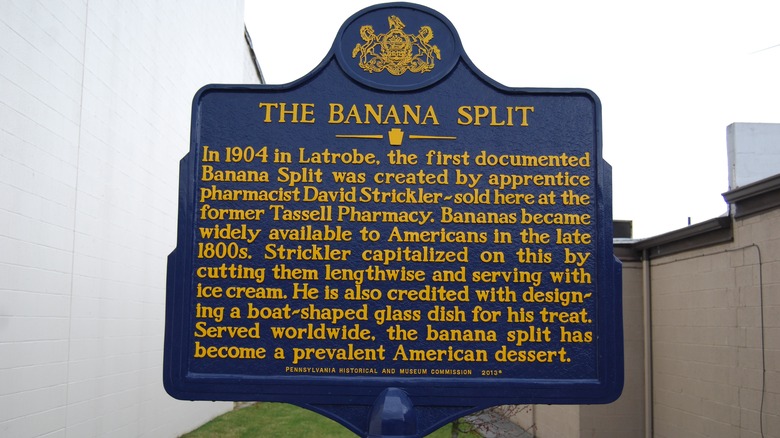The Historical Debate Behind The Origins Of The Banana Split
The banana split might be the most famous ice cream sundae. It has earned countless mentions in the annals of pop culture, including the Hanna-Barbera television series "The Banana Splits," which features full-body puppet costumes that will fuel your nightmares for weeks. It's a decadent dessert, and the traditional presentation of three ice cream scoops nestled between banana halves evokes a sense of youthful innocence. Being an American icon, it's no surprise that the origin of the banana split is well-documented; the only problem is that these documents often contradict one another.
One certainty is that the banana split wouldn't exist if not for the earlier invention of the sundae, which seriously elevated ice cream. According to Thought Co., the sundae's invention also has various origins. It could come from Evanston, Illinois, where soda sales were prohibited on Sundays, so parlor owners sold ice cream sodas (without the soda). It may be from Wisconsin, where a soda fountain owner created the dish at a customer's request. A competitor saw this and began to make the same dish, only serving it on Sundays. Perhaps the most popular origin story, though, is that the sundae was invented in 1892 by Chester Platt of Ithaca, New York. A drug store owner in a time when such businesses overlapped with ice cream parlors, Platt spruced up an ice cream treat for a local reverend. He is credited with popularizing the cherry topping that makes the ice cream sundae iconic.
Wilmington, Ohio, claims to be the birthplace of banana splits
Wilmington, Ohio, is one of the towns laying claim to the banana split. According to Ohio Magazine, it was supposedly invented in 1907 by a restaurant owner named Ernest Hazard. He wanted to put something on the menu that would attract local college students to his establishment. Hazard commissioned his employees to come up with a fun treat, a contest that he ultimately won with his creation of three scoops of vanilla ice cream between two banana halves and topped with chocolate, strawberry, and pineapple.
This story has become ingrained in Wilmington culture, so much so that the town hosts an annual Banana Split Festival every June. According to Ohio History Central, the festival features crafts and a banana split-creation station, and Wilmington Parks & Rec also mentions a banana split-eating contest. Unfortunately, the Wilmington Rotary Club reports that the festival was put on hold in 2020 because of the COVID-19 pandemic. In 2022, it was placed on hiatus due to difficulties finding enough volunteers to pull off a successful event. In another cruel twist, compelling evidence seems to prove that the banana split didn't even originate in Wilmington.
A town in Pennsylvania is the real birthplace
Though it may break hearts in Wilmington, the theory that Ernest Hazard invented the banana split is almost certainly false. Evidence suggests that it was actually created in Latrobe, Pennsylvania, in 1904. According to NPR, the gears were set in motion when David "Doc" Strickler took a job scooping ice cream at Tassell's Pharmacy. One day, a customer challenged Strickler to make something unique, so Strickland turned to a tropical fruit that had only recently been made available in the States: the banana (via Pennsylvania Center for the Book). Latrobe's claim to the banana split is backed by a letter written by Strickler himself.
Latrobe has its own festival every year in August, dubbed the Great American Banana Split Celebration. According to the event's website, it was started in 2013 when the Pennsylvania Historical Society marked the former site of Tassell's Pharmacy to commemorate Strickler's invention. Activities include a 5k banana run, a cornhole tournament, and a pie-eating contest. Each festival sees the crowning of a Banana Split Princess, who makes appearances at community events throughout the year of her reign. The Latrobe Art Center also hosts a Yellow Tie Gala as part of the celebration, with a yellow dress code and a lot of desserts.


